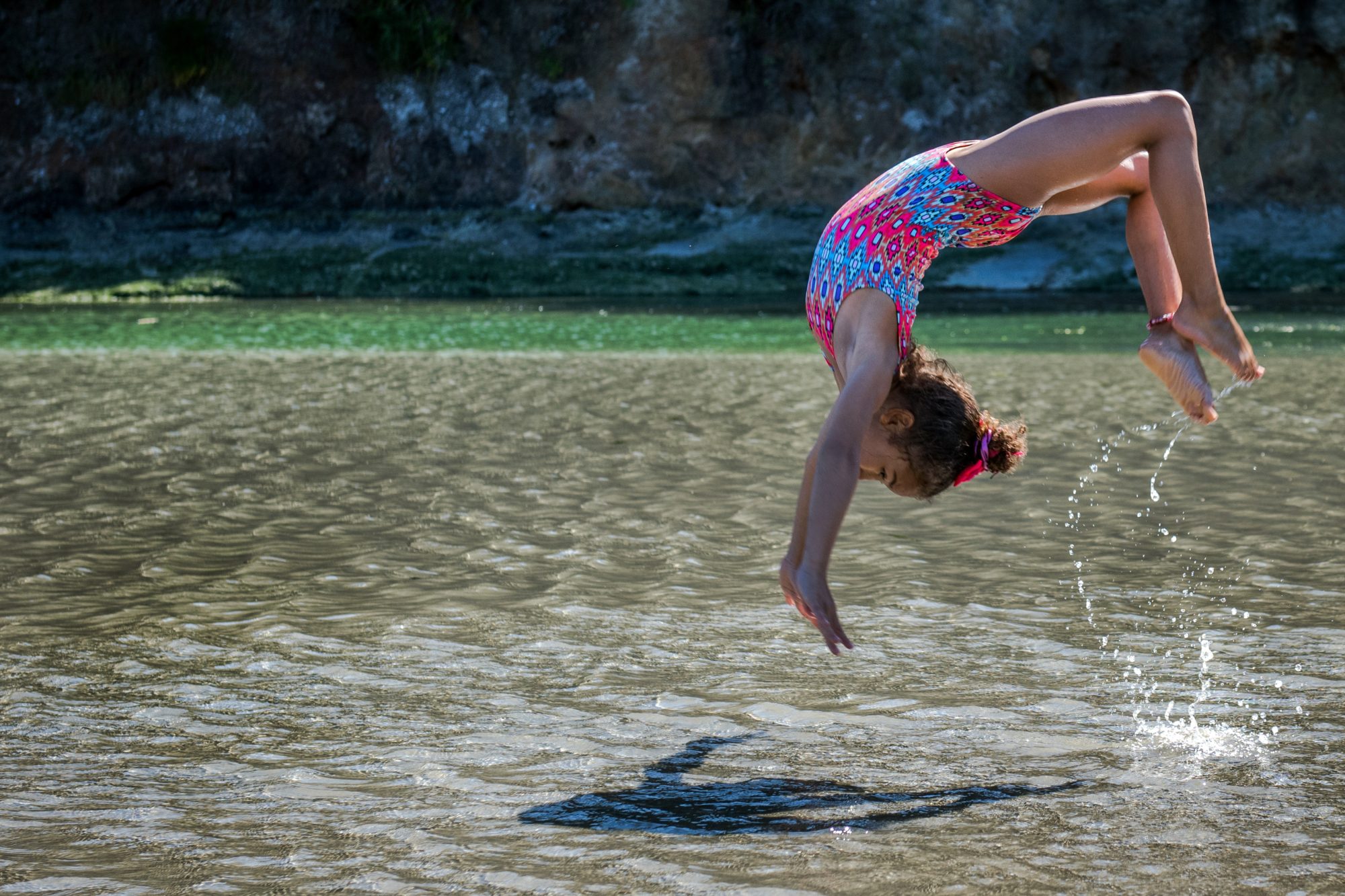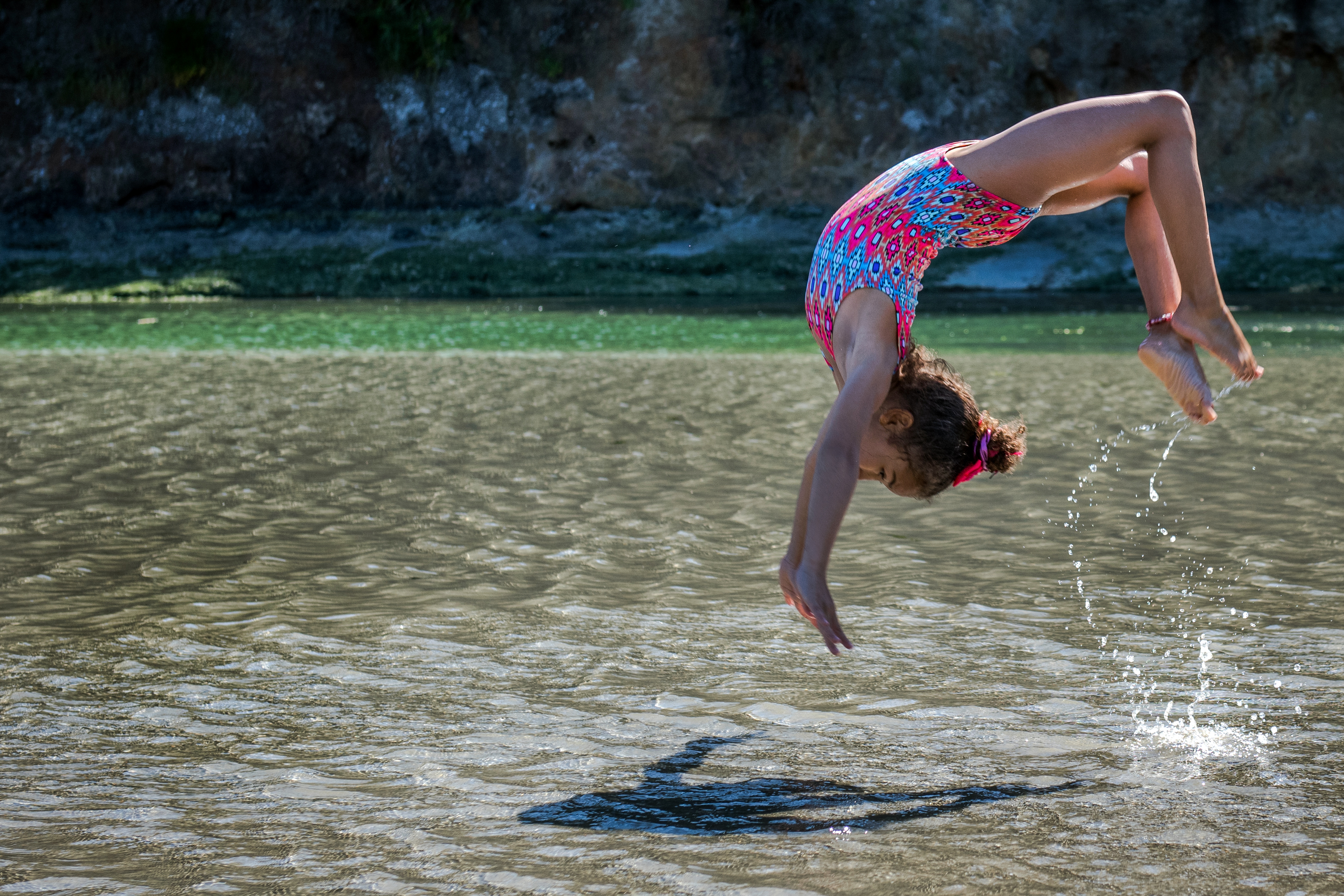How to Do: Gymnastics for Beginners
 Gymnastics is a great sport for both physical and mental health. It is very effective for staying fit and sharp. It develops our bodies in strength and tones our muscles, especially our arms, legs, shoulders, back, chest, and abdominal muscles. A good gymnast has full control over their bodies among other traits such as alertness, precision, self-confidence, and self-discipline. Regular gymnastics can also help prevent numerous diseases like asthma, cancer, obesity, heart diseases and diabetes. Other than flexibility and strong body a gymnast also has characteristics such as increased self-esteem, improved cognitive functions, greater coordination and heightened social skills.
Gymnastics is a great sport for both physical and mental health. It is very effective for staying fit and sharp. It develops our bodies in strength and tones our muscles, especially our arms, legs, shoulders, back, chest, and abdominal muscles. A good gymnast has full control over their bodies among other traits such as alertness, precision, self-confidence, and self-discipline. Regular gymnastics can also help prevent numerous diseases like asthma, cancer, obesity, heart diseases and diabetes. Other than flexibility and strong body a gymnast also has characteristics such as increased self-esteem, improved cognitive functions, greater coordination and heightened social skills.
Whenever we watch the gymnasts performing on T.V at the national level or at the Olympics we get amazed at their physical strength and control over their bodies. It is easy to get impressed by such graceful flexibility and balance but you should know that it is not a raw trait that they were born with. Professional level gymnastics is a complex sport that requires strength, flexibility, coordination, and endurance. And it takes years of practice to reach a level when you truly develop the skills to control your body to take part in national level competitions. For beginners, it is not advised to learn gymnastics at home and it would be best to learn under the guidance of a professional and with proper equipment. Here you’ll learn about the basic dos and don’ts of gymnastics and how to maintain your body with practice.
Prepping Up:
Learning a new sport is always exciting but you shouldn’t hurt yourself or others in doing so. Prep up with proper clothes, if you don’t have a gymnastics leotard, then wear gym shorts and a T-shirt in which you can move easily and comfortably. It is advised to remove any jewelry or accessories that you’re wearing. It is best to start with the basic skills that are comfortable for you. Make sure that the room is clear of furniture and other objects that could hurt you and remember to not tumble in anyone’s way. Make sure you that you don’t start work out right after eating and don’t chew gum during exercise as there’s a hazard of you choking on it.
Warming Up:
Warm up is very important before every sport to avoid injuries. What good is your enthusiasm if you end up on the bed with a pulled muscle? The proper and safe way to train your body is by warming up the body slowly and gradually. By doing so, your muscles will loosen up before the actual hard work and will improve your overall performance plus your stamina. You can warm up your body with short circuits of simple exercises like half jacks, chest expansion, arm and torso rotation, neck tilts and rotation, and alternate back expansions.
Flexing Up:
The next thing to do after warm-up is stretch. Stretching your body will improve your overall flexibility. Once your body is warmed up, the muscles are at their most compliant state and will let you stretch further than normal. Stretching will increase your range of movement; you’ll need a lot of flex if you want to be good at gymnastics. You should give proper time to the neck, shoulders, back, and leg muscles and don’t overstretch them but flex them gradually. They’re very important for gymnastics. Start with simple and easy stretches such as hamstring stretch, deep side lunges, side leg raises, downward and upward dog, and back extensions.
Strengthening Up:
Before heading up for beginner’s coaching classes and during them, make sure to work hard on building your muscle strength. Strength is an important aspect of gymnastics and you must be strong enough to pull your own body weight. You can start with simple exercises such as push-ups, pull-ups, planks, lunges, crunches and arch ups to increase your strength. You’ll have to reach a basic level of physical strength before you start flipping, pirouetting, and standing on your head. It is better to do cardiovascular exercises too, so your heart and lungs keep up with your dreams of becoming a gymnast.
Practices:
The best way to jump the ladder is by mastering the basics. To become good, you must become best at the most basic moves. Start from square one and get help from a professional for the correct technique. You can start with perfecting forward and backward somersaults, backbends and bridges, and then make your way to headstands, handstands, cartwheels, and splits. But make sure that you’re doing them right. Ask your coach about the correct technique and practice it at home with someone watching or make a video of yourself to check if it is the correct technique that you were taught. When you are getting good at the basics, start practicing your jumps and flips. Don’t try flips and other complex tricks without a professional.


